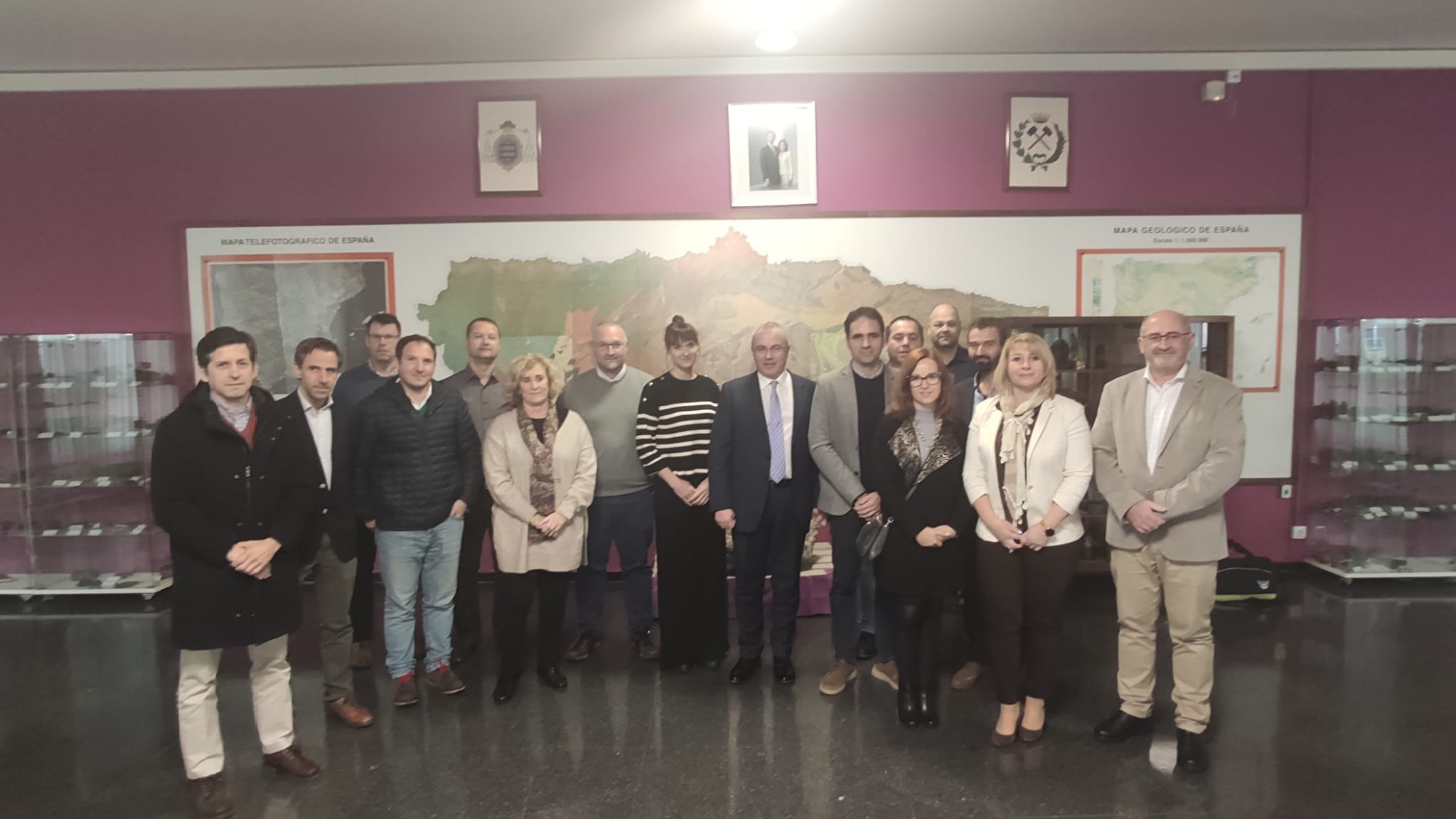
The School of Mining, Energy and Materials Engineering from Universidad de Oviedo (UNIOVI) serves as a centre of excellence for mineral resources and environmental research. Its research includes geology, prospecting, mining, treatment plants, materials, energy, environment, valuation of environmental assets and investments, risk assessment, etc. In 2018 it was nominated by the Shanghai rating as the best Mining School in Spain.
It has 25 research laboratories and more than 50 researches and has a long history of coal-related research, is located in Asturias, Spain’s main coal-producing region. It also has a solid track record of collaboration with the largest coal company in Spain, the state-owned Hulleras del Norte, S.A. (HUNOSA), and experience in RFCS projects such as MERIDA (Management of environmental risks during and after mine closure) 2015-2019, RECOVERY (Recovery of degraded and transformed ecosystems in coal mining-affected areas) 2019-2023, DD-MET 2019-2023, and POTENTIALS 2021-2023, as well as in other European research programmes such as H2020, F.P., LIFE, and others.
The Central Mining Institute of Katowice (GIG), was created in 1945 as a scientific and development organisation, subordinated to the Ministry of Economy, working for the benefit of the coal mining industry and also for enterprises representing different branches.
Its activities comprise: mining and geoengineering, geology and hydrogeology, geophysical engineering, industrial safety, environmental engineering, surface and structures protection in mining areas, minerals, sustainable energy technologies, social and economic issues, etc. GIG has extensive experience of acting as partner and coordinator of the European projects (FP, RFCS, ECSC, Central Europe and others).
The Asturian Energy Foundation (FAEN) is the Regional Energy Agency of Asturias (Spain), which is an entity without lucrative interest and with its own legal personality and full capacity to work. FAEN promotes and develops activities related to research, technological development and training with interest for the energy industry, Government and citizens of Asturias.
FAEN works on different activities related with energy as studies, energy planning, diffusion, audits, training, counselling and adviser, technological energy research and financial aid on energy projects. They are experts in energy savings and efficiency and in renewable energies.
The Technische Hochschule Georg Agricola University is part of the DMT-Gesellschaft für Lehre und Bildung mbH – a non-profit organisation for education and culture – and was founded in 1816 as a school of mining. Since then it focuses on the education and training of mine workers and mine managers.
With the decision of the German government in 2007 to phase out the coal mining activities in Germany, the university decided to focus on mine closure and post-mining. In 2015, the Research Institute of Post-Mining was established. Research is carried out in 4 areas: (1) “Mine water management”; (2) “Geomonitoring in Post-Mining”; (3) “Material sciences for industrial heritage” and (4) “Reactivation and Transition”.
M&B is a start-up company founded in April 2019 by Mining Engineers, to develop large scale unconventional pumped hydro energy storage projects in mines using dense fluids so the electromechanical equipment can be on the surface.
They formulate dense fluids from ores and/or mine dumps and certify them as suitable for fluid ballast or other uses, notably for unconventional pumped hydro energy storage. Their team includes experienced blue collar technicians with a background in high pressure hydraulics and particulate matter handling, as well as seasoned experts in high density fluid formulation and installation.
Węglokoks Kraj S.A. belongs to the Węglokoks Capital Group, which was established in 1951. The Węglokoks Capital Group, apart from Węglokoks Kraj S.A., includes enterprises and companies from the metallurgical, energy, logistics and service sectors. Węglokoks Kraj S.A. is a producer of high-quality steam coal. Mining is carried out at Bobrek – Piekary mining complex, which is owned by the company and employs approximately 2,500 people. Bobrek – Piekary Mine Piekary Mining Plant ended mining operations in January 2020.
Currently, the underground part and elements of the ground infrastructure are in the liquidation phase. On the other hand, Bobrek – Piekary Mine Bobrek Mining Plant has been operating since 1907 in the cities of Bytom, Zabrze and Ruda Śląska. The mining plant (Józef and Bolesław shafts) is located in the Bobrek district in Bytom, and the Ignacy shaft is located in the Rokitnica district in Zabrze.
Hulleras del Norte, S.A. (HUNOSA) is a state-owned coal mining company based in Asturias, in the north of Spain. It currently owns one underground coal mine, one washery and a power plant equipped with a capture CO2 facility.
HUNOSA is nowadays involved in a process of transition from a company based on coal extraction and fossil fuel energy production to a company focused on renewable energies.
The Velenje Coal mining company a related company of Holding Slovenske elektrarne, despite the trends after the transition to low or carbon neutral society, which is indicated in the world and at home, is still an important and indispensable pillar of Slovenian energy. Together with the Šoštanj Thermal Power Plant, it has been providing an uninterrupted and reliable supply of domestic electricity to a third of Slovenia for decades, and even more in dry periods. Due to Slovenia’s greater energy independence from electricity imports, the production of electricity from coal in the modern and environmentally acceptable Unit 6 and the renovated Unit 5 of the Šoštanj Thermal Power Plant will continue for several years. Velenje Mine already extracted more than 252 million tons of coal from the depths of the Šaleška Valley. The Velenje mining method, which is being performed by caving the hanging wall layers is used in one of the thickest lignite seams in the world.
Today, Velenje Mine production, which depends mainly on the consumption of the Šoštanj Thermal Power Plant, is around 3.2 million tons per year. Velenje Mine has participated in a number of EU funded research projects such as VELGASPREVENT, LOWCARB, ROCD, INDIRES, INESI, METHENERGY PLUS, PICTO, MAPROC, COAL2GAS and GHG2E.
